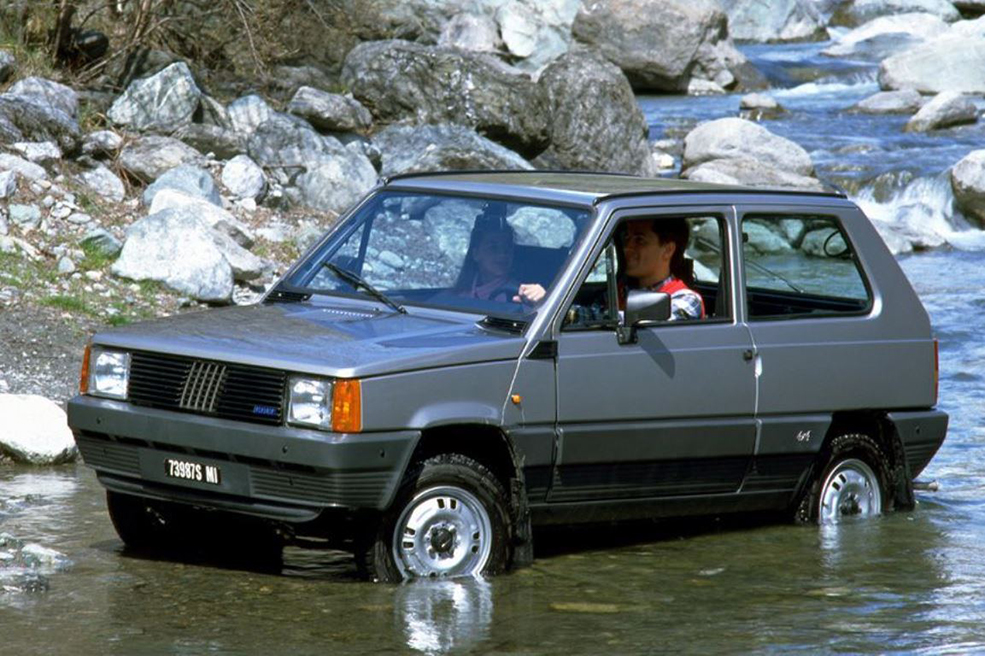The new-car market of the 70s and 80s may have been dominated by mainstream saloons but there was no shortage of niche offerings
Words: Paul Jackson
Today’s car market is dominated by SUVs, with nearly every manufacturer offering a range of high-riding, faux-4×4 models to suit every budget. Demand is strong, with SUVs making up around 40 per cent of European sales.
But go back 40 or 50 years and things looked very different. Instead of SUVs, family hatchbacks and saloons ruled the roads, cars that now make up only a small slice of modern sales. Call it progress or perhaps just a shift in tastes.
There have always been enthusiasts drawn to something more distinctive, however. This was especially true in the 1970s and ’80s, a golden age for niche models that have since become true classic cars. While mainstream brands like Ford and British Leyland filled the sales charts with saloons, hatchbacks, and superminis, there were also plenty of alternative models on offer for those who need .
If you fancy driving something a bit left-of-centre, these niche classics remain some of the best choices.
Honda CRX
When Honda launched its nimble little CRX here in the UK in 1984, it caused quite a stir. Despite being based on the platform of the worthy but fairly dull Civic, the new CRX was a low-slung fastback coupe that looked sensational from any angle. It was sharp, it was angular and it was the most handsome affordable sportster out on the street.
The was more to the newcomer than just good looks, though. The front-wheel drive CRX was an amazingly competent driver’s car, its stiffened coil-sprung suspension resulting in impressively flat handling characteristics, loads of grip and a real wow factor on the open road. Even better, the 100bhp, 1.5-litre 12-valve engine was both eager and free-revving, while the knife-through-butter gearchange helped exploit every last drop of power.
Sales got off to a healthy start, but with hot hatches gradually stealing sales away from the coupe market, Honda wasted no time in announcing a MkII CRX as early as 1986. It looked not dissimilar to its predecessor, but the latest CRX boasted softer, more curvaceous styling – and a lot more power. In fact, once the V-TEC version (complete with variable valve timing and 16-valve head) was launched, this little firecracker gave 150bhp – enough for a top speed of 129mph and 0-60 in just 7.9 seconds.
Not surprisingly, this latest version was even more entertaining to drive than the original, and was soon hailed as a hero amongst drivers’ cars. Yet despite such excellence, the MkII wasn’t allowed to live much longer than the latest Civic range on which it was based; as the more humble Civic offerings bit the dust in 1991, so the CRX followed suit.
The first two generations of CRX weren’t the only affordable coupes on sale at the time, but they were among the most entertaining. During the MkI’s first full year on sale, it was pitched at around the same price as a Capri 2.0 Laser – with the youthful feel of the Honda making the Ford seem almost dinosaur-like by comparison.
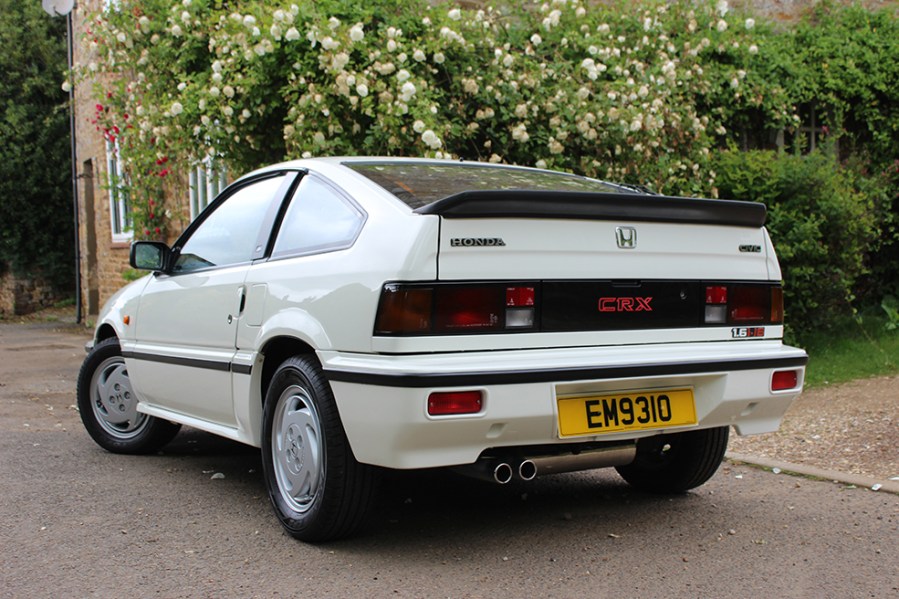
Matra Rancho
With today’s new-car market being dominated by two-wheel drive SUVs, the machine shown here was arguably years – or even decades – ahead of its time. Specialist sports car manufacturer Matra spotted a gap in the market and launched the Matra-Simca Rancho in 1977, a major departure for a company better known for its stylish coupe (the three-seater Bagheera). Indeed, the idea of creating a more affordable Range Rover rival was seen as rather brave. But with the reassurance of being owned by the mighty Chrysler Corporation at the time, Matra had a bit more financial clout than your average specialist car maker.
Creating a 4×4-lookalike is obviously an expensive undertaking, and so Matra chose to base its newcomer around the pick-up version of the old Simca 1100. The whole front end of the Simca was employed, including the driver and passenger doors; the rear, meanwhile, comprised a large glassfibre ‘box’ grafted on to the 1100 pick-up’s chassis, creating what we’d now instantly recognise as an SUV. With the bonus of lots of plastic add-ons (enormous bumpers, side rubbing strips and wheelarch extensions), the result was certainly striking.
While the Rancho borrowed a few of the design features so admired on the Range Rover (including a two-piece horizontally-split tailgate), there was one crucial element that wasn’t employed: four-wheel drive. Yet, perhaps bizarrely, that didn’t deter Matra from promoting the Rancho as an all-terrain vehicle: “Rancho has the traction and ground clearance of a specialist vehicle,” boasted brochures of the time, explaining that it could “plough through mud and snow, tackle the roughest country tracks.”
The Rancho wasn’t particularly cheap. Okay, it cost much less to buy than a Range Rover. But against conventional two-wheel drive estates it was dear. By the time sales started in the UK in 1978, the Rancho was priced at £5650 compared with a mere £5357 for the bigger Volvo 245 DL. And for a 1442cc idiosyncratic holdall, that was a pretty hefty price.
It didn’t stop the Rancho being a success, though. Between 1977 and ’84 (by which time it was known simply as the Talbot Rancho), almost 56,700 examples were built. Very few reached these shores, however, with the vast majority of Britain’s estate and SUV buyers choosing to ignore this French oddball. Spot a right-hand drive Rancho now and you’re looking at a very scarce machine indeed, albeit one that – with the benefit of hindsight – was quite the trendsetter.
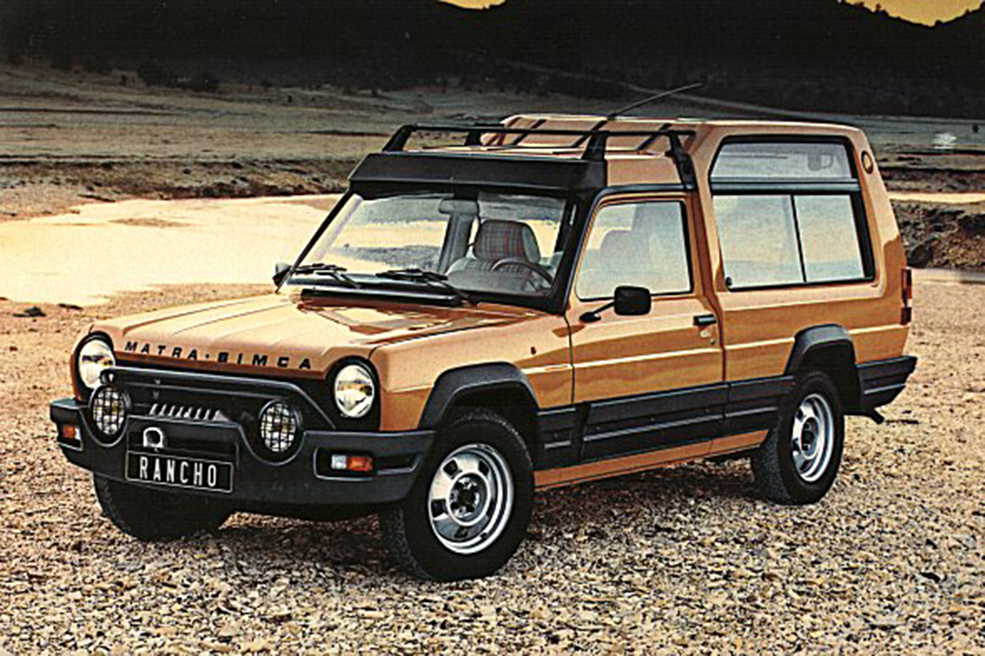
Volvo 66GL
Of all the Volvos produced in the 1970s, the 66 is by far the quirkiest. Launched in 1975, this rebadged version of the DAF 66 came about via Volvo’s takeover of the ailing Dutch marque a year earlier. The Volvo 66 remained in production until 1980 and was offered in two-door saloon and three-door estate guises, combining 1.3-litre Renault power with DAF’s Variomatic belt-driven automatic transmission. Around 106,000 were sold in total, more than 10 per cent of which managed to find UK buyers.
The 66 is certainly one of the rarest Volvos of the ’70s, although such rarity doesn’t always translate into hefty asking prices. If you’re a DAF fan, you’ll probably aim for a car bearing the Dutch maker’s badge – and if you’re a Volvo enthusiast, you might struggle to see the Swedish firm’s DNA in this tiddler. For those who appreciate a touch of individuality, however, the Volvo 66 is an intriguing choice.
The DAF 66 of 1972 was an important model for the struggling Dutch car maker, its freshened-up styling (by Giovanni Michelotti) giving the company’s saloon and estate cars a new look for the ’70s. When it then morphed into the Volvo 66 three years later, the design remained largely unchanged, although the Swedish-badged version did include a host of safety updates as a nod to Volvo’s reputation in that department; the redesigned seats featured headrests, a collapsible safety steering wheel was fitted, and side-impact bars were added inside the doors.
The 66 gave Britain’s Volvo dealers a useful entry-level model, remaining in production through to the start of the ’80s and offering an intriguing alternative to other small cars with automatic transmission. Back in 1977, a 66GL saloon would have set you back £2757 – a figure that put it up against the Austin Allegro 1300 Super Automatic (£2703) and the Ford Escort 1.3L Automatic (£2636), both of which were inevitably more popular among British buyers.
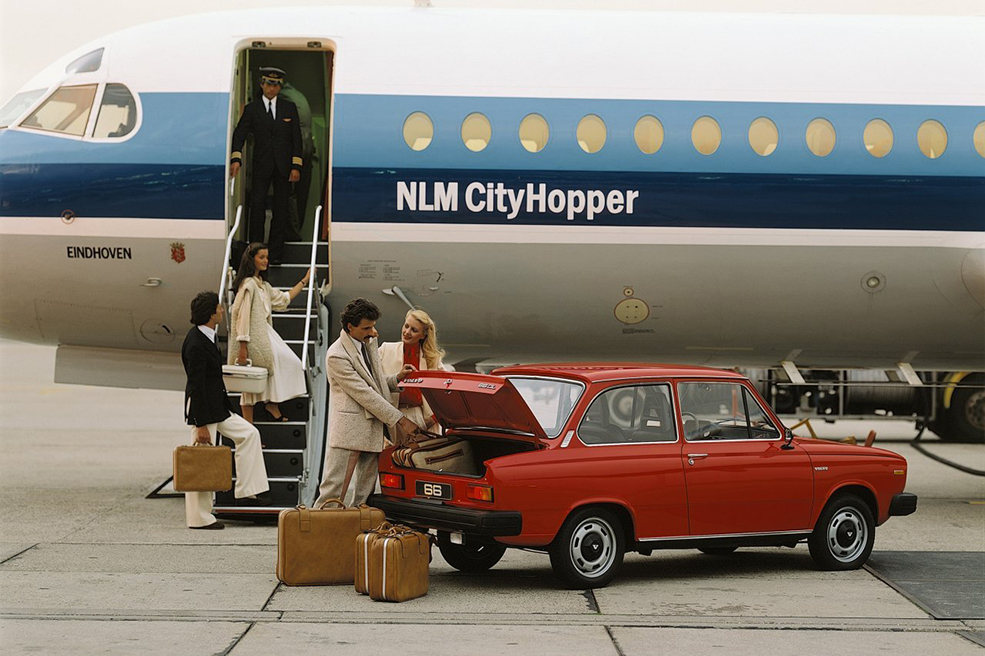
Skoda S110R & Rapid
By the 1970s and 1980s, rear-engined saloons were increasingly scarce on the new-car market. The Beetle was about to leave the UK by 1977, and the aged Simca 1000 wasn’t far behind, which meant that by the end of the decade there would be only the Fiat 126 city car and various Skodas still featuring rear-mounted engines. The Skoda Estelle faced tough competition from front-engined rivals from Eastern Europe (led by Polski-Fiat and Lada), and the Czech firm certainly came in for criticism over the poor handling traits of the Estelle when it first went on sale. Intriguingly though, Skoda felt there was scope for a sporting version, hence the launch of the Rapid coupe in 1982.
This wasn’t the first time that Skoda had gone the rear-engined coupe route, as the Rapid’s predecessor was the S110R – effectively a fastback version of the old S110 saloon, which meant it was a generation behind the Estelle. It was certainly an unusual choice here in the UK, with the vast majority of Skoda buyers preferring the four-door practicality of the Estelle over the S110R’s pretensions of sportiness; and yet it had a kind of quirky appeal, as well as offering terrific value for money. Back in 1977, a brand-new Skoda S110R would have set you back just £1699, at a time when even the cheapest Mini (the humble 850) was priced at £1795.
The subsequent arrival of the Rapid brought increased sales, with Skoda’s improvements to its suspension design resulting in a rear-engined coupe that could actually go round corners with confidence… and at reasonable speed. Indeed, the Rapid continued to improve throughout the 1980s, with some motoring writers suggesting it had evolved into a cut-price Porsche 911. Okay, that may have been a slight exaggeration, but the Rapid was genuinely competent.
Known as the Rapid 130 thanks to its 1.3-litre powerplant (developing 58bhp initially, rising to 62bhp on later fuel-injected models), the sporty Skoda was joined by a convertible version in 1985, badged as the Rapid Cabriolet and converted in the UK by specialists LDD Ltd of Kent. And at just £4992 all in (a £1242 premium over the coupe), the open-top Rapid significantly undercut such rivals as the Citroen Visa 11RE Convertible (£6058) and Talbot Samba Cabriolet (£6695).
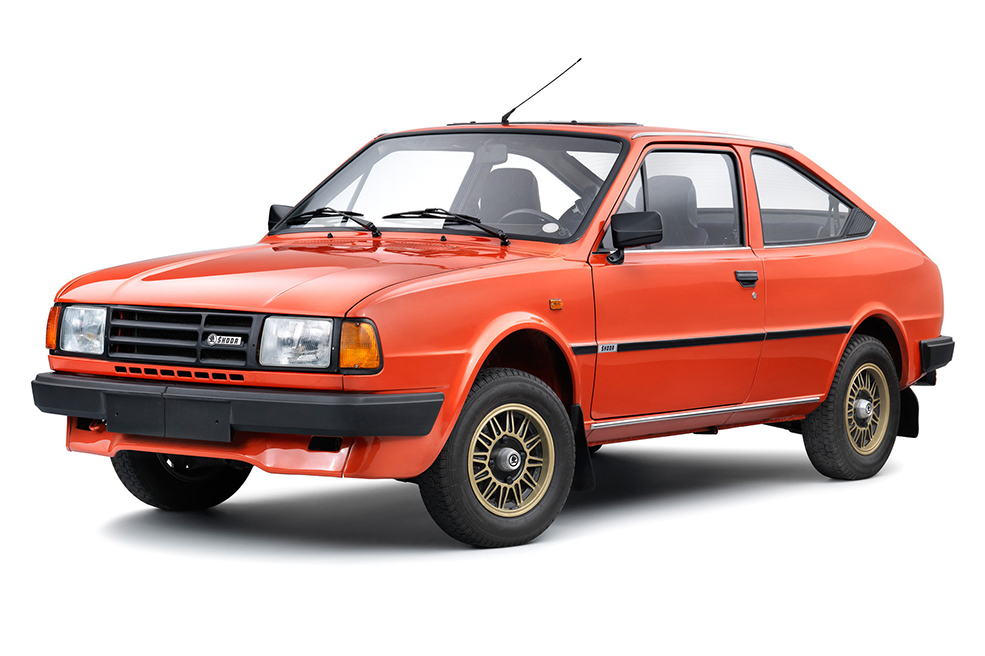
Daihatsu Charade GTti
Prior to 1987, anyone in the market for a supermini-based hot hatch could have chosen from such bestsellers as the Fiesta XR2 or MG Metro. But then along came the all-new Daihatsu Charade GTti – a car that was a technological leap forward from those relatively unexciting offerings from mainstream manufacturers.
The new Charade line-up of 1987 was arguably nothing to write home about. It comprised a range of competent and reliable five-door runabouts, ideal for any discerning septuagenarian’s weekly shopping trips. But the three-door GTti was something else. It employed the same basic 993cc three-cylinder engine as the rest of the range, but in this guise was a DOHC design with a 12-valve cylinder head, fuel-injection, turbocharger and intercooler. The end result was a spectacular-for-the-time power output of 99bhp at 6500rpm, far more than any other sub-1000cc production engine of the late 80s.
Just as useful was the fact that the lightweight Charade tipped the scales at a mere 820kg, which meant a class-beating power to weight ratio of more than 117bhp per tonne. No other similarly priced hot hatch (just £7699 in the UK in 1987) could hope to even come close. And inevitably, the GTti proved to be a thrilling drive, with a top speed of 114mph and the all-important 0-60 dash in less than eight seconds. Remember, these were figures for a cut-price go-faster ‘supermini’ rather than a grown-up Golf GTi rival; no wonder the GTti was arousing the interest of petrolheads everywhere.
It wasn’t just the Daihatsu’s on-paper performance that mattered, though. This turbocharged terror was the most fun thing on four wheels that the hot hatch market had seen in a very long time. Its free-revving 12-valve engine provided unlimited joy for your right foot, while the sudden kick-in-your-back boost provided by prodigious turbo lag made the whole thing even more exciting. Once the front wheelspin was under control, the GTti would race forward at a rate unprecedented at this price level, while its super-sharp steering provided all the feedback any keen driver could wish for.
In one fell swoop, the GTti managed to make most rivals seem dull by comparison, and yet it remained very much a niche product in the UK. This was partly due to import restrictions on Japanese cars, combined with the buying public’s distrust of what it saw as a complex and highly technical piece of kit. Find one now and you’ll have a highly entertaining – and refreshingly different – classic hot hatch to enjoy.

Suzuki SJ
Launched in 1982 and remaining on sale in the UK through to the late ’90s, Suzuki’s smallest 4×4 was a major hit for the Japanese firm, building on the success of its LJ predecessor. It proved particularly popular here in the UK, where it was priced at the same level as a fairly lowly supermini and managed to carve itself a niche among younger buyers in particular. Once the convertible model was launched – available in a wide range of bright colours and aimed unashamedly at the urban crowd – there was no stopping the little SJ, which became a common sight outside hairdressers throughout the country.
Okay, we’ll be the first to admit that the SJ is a crude device. Even by standards of the early ’80s, this tiny 4×4 offered a hard ride, mediocre handling and plenty of on-board noise. But it’s also a highly capable off-roader; once you’ve selected all-wheel drive and low-ratio gearing (easily done via the separate transfer box lever), you’ve got the kind of go-anywhere ability that puts many a larger 4×4 to shame. The fact that the Suzuki boasts an extra-short wheelbase, high ground clearance and tiny overhangs makes it ideal for off-roading. And so does it lightweight design, which means it can ‘float’ over the kind of mud that a heavier vehicle will sink into.
All UK-spec SJs were petrol-engined, with the initial 970cc SJ410 being joined eventually by the bigger-capacity (1.3-litre) SJ413. The better-equipped Suzuki Samurai arrived in the late ’80s, as did the Spanish-built Santana version, with hardtop and convertible versions of the SJ family available throughout most of its long run.
Nowadays a well-preserved SJ is a fairly unusual sight, with neglected examples having long since rotted away, whilst many of those that did survive ended up being heavily modified and used by fans of weekend off-roading. But it’s worth looking out for an excellent, original car that’s been well looked after. Admittedly, the SJ’s not exactly a refined on-road drive, and its handling falls woefully short of a regular car from the same era. But for all its quirkiness – plus the added roofless appeal of most examples sold here – there’s a lot to be said for Suzuki’s smallest 4×4 of the ’80s.
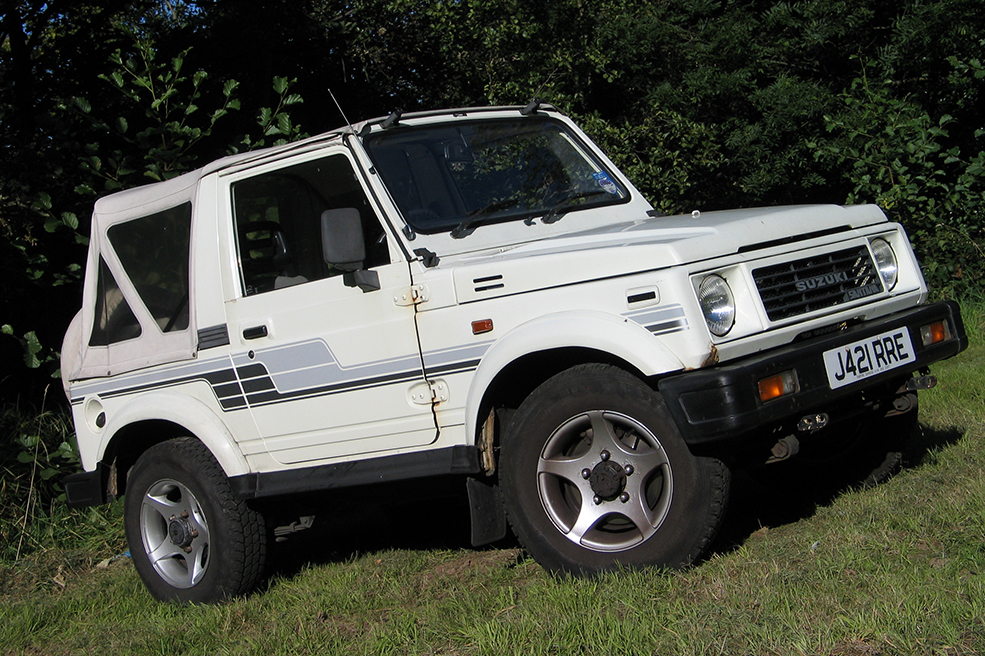
Fiat Panda 4×4
The SJ wasn’t the only ultra-compact 4×4 on sale in the 80s, as Fiat decided it wanted a slice of the same automotive pie. Three years after the 1980 launch of the Fiat Panda came the most surprising and niche version of all: the Panda 4×4. It might not have had the same kind of extreme off-road prowess as the Suzuki, but the humble all-wheel drive Panda was a real workhorse with excellent traction, making it a common sight in ski resorts and much of northern Europe during its heyday years.
Under the bonnet sat a bigger-capacity (965cc) engine to handle the extra weight, while beneath the skin was a part-time all-wheel drive system supplied by Steyr-Puch of Austria. First gear was ultra-low, enabling you to make steady progress over harsh terrain, while a set of snow chains added to the all-wheel drive set-up made the lightweight Panda a formidable get-you-there vehicle in snowy or icy conditions.
A 1986 update saw the Panda 4×4 receiving the latest 999cc FIRE overhead-cam engine, with 50bhp (compared with the previous model’s 48bhp) and big improvements in refinement. The latest 4×4 also benefited from the same kind of cosmetic updates as the rest of the range. Sales of the regular Panda continued in the UK through to 1995, although imports of the 4×4 ceased three years earlier. Most sought after version now is the top-of-the-range Sisley, which arrived as a limited edition in 1987 but then continued as part of the range, benefiting from metallic paintwork, white painted wheels, a roof rack, an on-board inclinometer and other niceties.
As you’d expect, the 4×4 always carried a price premium compared with the rest of the Panda range. Back in 1985, a brand-new example would have set you back £4636, making it more expensive than the significantly larger Fiat Uno 45 Super (at £4495). For what was effectively a utilitarian hatchback of city-car proportions, it wasn’t cheap; but compared with just about anything else available at the time with all-wheel drive, it was an absolute steal. And these days it’s highly sought after, with immaculate examples likely to achieve sale prices of £10,000-plus. Still, what price can you put on individuality?
